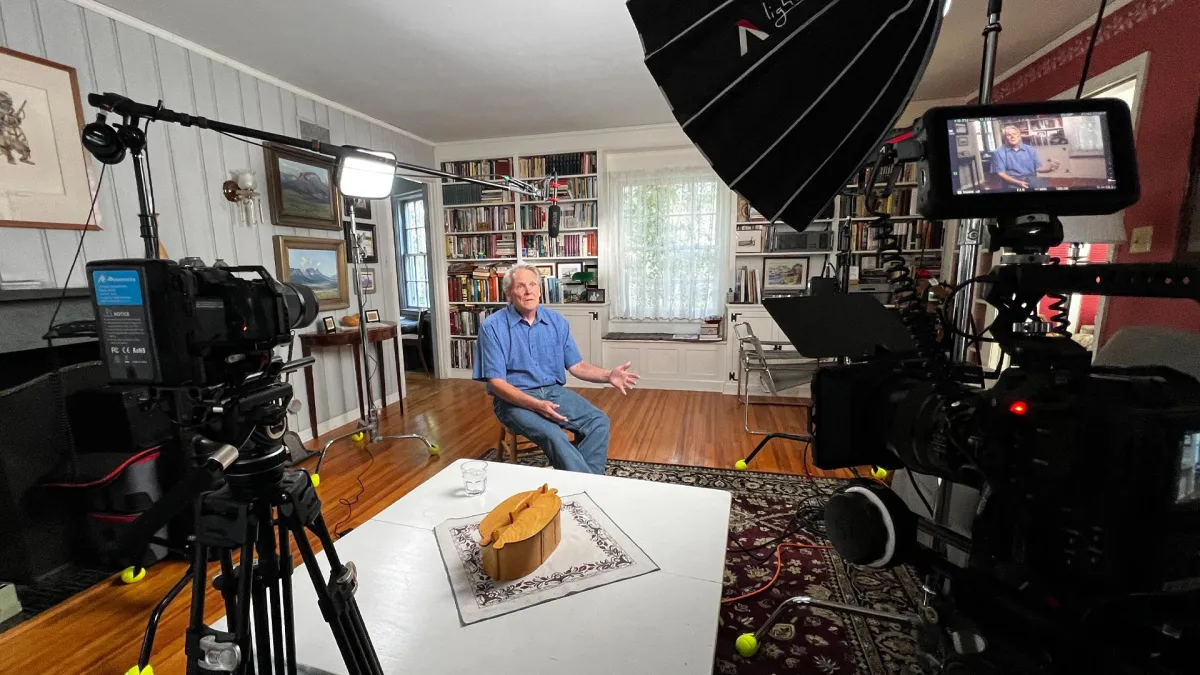Blog
Low Quality Production
How to Deal with Unprofessional or Outdated Video Content

Video quality is a powerful factor in how audiences perceive a brand. Poorly produced or outdated video content can undermine credibility, decrease viewer engagement, and limit a brand's growth. As competition in digital marketing intensifies, brands that prioritize high-quality production are more likely to capture and retain audience attention. This article will explore why video quality matters, signs it’s time for an upgrade, and practical steps to create professional and engaging video content.
WHY VIDEO QUALITY IF IMPORTANT FOR A BRAND'S SUCCESS
High-quality video production goes beyond aesthetics; it’s a foundational element of brand trust and credibility. Audiences associate polished visuals and clear audio with professionalism, which builds trust and fosters a positive brand image. Quality also affects viewer retention, as people are more likely to watch and engage with content that’s easy to see and hear. By investing in quality production, brands can create a strong visual identity, stand out from competitors, and ultimately improve audience connection and loyalty.
SIGNS YOUR VIDEO CONTENT NEEDS A QUALITY UPGRADE
Poor Visual and Audio Quality
One of the first indicators that video content needs an upgrade is poor visual and audio quality. Blurry visuals, inconsistent lighting, and unclear or muffled audio can turn audiences away within seconds. In today’s high-definition era, audiences expect professional-quality production, so subpar visuals or sound can damage a brand’s credibility and reduce engagement.
Outdated Content or Techniques
Another sign of low-quality production is outdated content or techniques. Videos with old logos, color schemes, or messaging can make the brand appear out of touch or stagnant. Staying visually and stylistically current is key to maintaining audience relevance and demonstrating that your brand is active and forward-thinking.
Lack of Consistency Across Videos
Consistency in video quality is essential for creating a unified brand presence. When different videos vary significantly in quality—due to inconsistent lighting, audio clarity, or editing style—it can confuse audiences and weaken brand recognition. Establishing a uniform quality standard ensures that every piece of content represents the brand professionally.
COMMON CAUSES OF LOW-QUALITY VIDEO PRODUCTION
Limited Budget or Resources
One of the main reasons brands end up with low-quality videos is budget constraints. Quality production requires an investment in tools, time, and talent, which may not be feasible for every brand. However, cutting corners on quality can harm brand perception and limit audience engagement. Many budget-friendly strategies exist to improve quality without breaking the bank, making it possible for even small businesses to elevate their video production.
Lack of Proper Equipment
Professional-grade equipment, such as high-quality cameras, microphones, and lighting setups, plays a major role in producing clear visuals and sound. Without the right equipment, videos can appear grainy, with poor lighting and distracting audio issues. Investing in basic but reliable equipment can make a significant difference in production quality and help videos stand out.
Minimal Editing and Production Skills
Creating high-quality video content requires some level of editing and production skill. When skill gaps exist, videos may lack proper transitions, color correction, or sound balancing, resulting in a less professional product. Brands without in-house production expertise can benefit from online tutorials or beginner-friendly editing software to improve their production skills, or they can outsource video editing to professionals.
STEPS TO IMPROVE VIDEO PRODUCTION QAULITY
Invest in Quality Equipment
High-quality video equipment doesn’t necessarily mean top-of-the-line. For those on a budget, starting with essential items like a decent camera, lapel microphones for clear sound, and ring lights or softbox lighting can greatly improve video quality. Accessories like tripods and stabilizers can also help create smooth, professional-looking footage.
Outsource or Hire Skilled Professionals
If in-house skills or resources are limited, hiring freelance video professionals or outsourcing production can be a wise choice. Professional videographers and editors bring experience and technical expertise that can take video content to the next level. Working with skilled professionals also allows for more creative and polished results, ultimately improving audience perception of the brand.
Use Simple Editing Software for Beginners
For brands just starting out with video production, there are many user-friendly editing tools, such as iMovie, Adobe Premiere Rush, and Canva Video, that don’t require extensive training. These tools offer basic editing features like trimming, transitions, and audio adjustments, making it easier to create polished videos even without professional expertise.
Plan and Script Your Videos
Proper planning is essential for quality production. Drafting a clear script and shot list helps streamline filming and ensures a cohesive message. When videos are organized and intentional, it’s easier to maintain a professional tone and reduce the need for extensive editing afterward. Scripting also allows brands to deliver a consistent message, reducing the risk of errors and maximizing viewer engagement.
TIPS TO REFRESHING OUTDATED VIDEO CONTENT
Updating older video content is a cost-effective way to enhance brand perception without creating new videos from scratch. Here are some ways to refresh outdated content:
Re-edit with Updated Branding: If a video has outdated logos, color schemes, or fonts, re-editing to include current branding can make it feel new and relevant. Simple adjustments like changing intros, outros, and overlays can have a big impact.
Add Fresh Voiceovers or Music: Audio quality often improves with better recording equipment or software. Re-recording voiceovers with high-quality equipment, or updating background music to align with current brand themes, can modernize the content.
Incorporate New Visuals: Sometimes, a quick update to visual elements, like inserting new product shots, adding animation, or adjusting lighting effects, can rejuvenate older content and make it more engaging to today’s audience.
LONG-TERM BENEFITS OF HIGH-QUALITY VIDEO PRODUCTION
The advantages of quality video production extend beyond aesthetics, providing valuable long-term benefits:
Improved Viewer Retention: High-quality visuals and sound keep viewers engaged and encourage them to watch through to the end.
Increased Audience Trust: Professional content reflects well on a brand, helping build trust and credibility with viewers. Audiences are more likely to engage and return to brands that prioritize quality.
Enhanced Conversion Rates: Quality content has a stronger influence on purchasing decisions, leading to better conversion rates and greater ROI on marketing efforts.
High-quality video production is an essential investment for any brand aiming to engage audiences and build a strong reputation. While upgrading equipment or outsourcing may require an upfront investment, the returns in terms of viewer engagement, brand loyalty, and customer trust are well worth it. By focusing on quality improvements and occasionally refreshing outdated content, brands can position themselves as professional, credible, and memorable, ultimately driving growth and audience connection.
FEATURED ARTICLES
Low Quality Production – Dealing with Unprofessional or Outdated Video Content
Lack of Strategy – Why Having No Clear Direction for Video Campaigns Hurts Your Brand
Inconsistent Branding in Video Strategy – How to Build a Cohesive Brand Across All Video Content
GET UPDATES
We Help Corporate
Brands Create Videos
That Drive Results.
We partner with corporate marketing teams to deliver high-quality, branded video campaigns—recruitment videos, client stories, testimonials, and more. Together, we help you build stronger connections, enhance brand trust, and turn viewers into loyal customers.
We deliver custom-branded video content that’s uniquely yours.
From recruitment videos to testimonials, every project we produce is tailored to your brand’s voice and goals.
We collaborate with your team to create high-quality videos that connect with your audience, strengthen your brand, and drive measurable results.
No cookie-cutter solutions—just content that speaks directly to who you are and what you stand for.
Easton Bennett
Owner, The Creative Treatment
